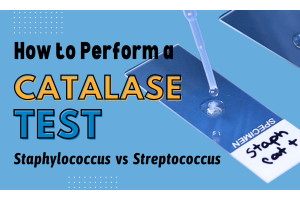We need Cannabis, not CannaBIZ
We know that cannabis can
make people sick. We know that the pathogens present in this medicine, like
many others, have killed patients[i].
We know that our most vulnerable and desperate cannabis patients are immunocompromised,
terminal, and/or pediatric. WE, US, YOU AND I, must address patient safety in
an informed and rational way. We do not want a failure in how we handle
cannabis to give way to public distrust in its potential to heal. We have
fought too hard to lose our footing at this point.
I spend a lot of time
thinking about how we, as an industry, can responsibly move forward with the
screening and testing of cannabis materials for pathogenic, or disease
inducing, microbiological organisms. I work for Hardy Diagnostics, a
microbiology company that has been a present and important part of this testing
for over a decade in the US. We first established relationships with cannabis
labs on the West Coast and Colorado in the early days of medical marijuana legislation.
Since then, many things have changed across the corporate cannabis landscape,
but the effective and reliable science of identifying potentially harmful and
deadly contaminants has remained our core strength.
As we entered the cannabis
testing space, we took what we knew about finding dangerous pathogens from
established FDA, USP and ISO certified methods and applied these practices to the
testing of medicinal, recreational, edibles, and oils. When we look at how the
FDA defines the identification of Salmonella,
E coli, Yeast/Mold, enterobacteriaceae
and other pathogenic organisms in food, cosmetics and nutraceuticals, we see
over and over again the dominance of validated and well established methods
using culture media technology. I find myself regularly referring to the FDA
Bacteriological Analytical Manual (BAM) for the isolation and id of the
following organisms:
Of course, the FDA is not
alone in the use of culture media as the gold standard for microbiological
testing. Methods for these and many other organisms of concern are outlined in
USP and ISO, as well as the AOAC, and many other globally recognized leaders.
As a caution I will make this
point, culture media does not propose to be the only approach or an
independently adequate method for all microbiology testing. To date, there does
not exist one single method that answers the major questions we must ask; 1) Is
this a living organism, and if so, can I count the colonies? And 2) Which
species of organism is this? To most honestly and accurately answer these
questions, we must implement complementary technologies. In my experience, and
to quote a great movie, “anyone who says otherwise is selling something.”
I have great optimism that
the innovative minds and cutting edge science surrounding the cannabis
community will create advances in the field of diagnostics that will benefit
many other industries. I have a hope that we will be able to work together to
create this world. In the meantime however, it is important that we properly
implement the proven tools that we have to keep our public safe from disease.

Jessa Youngblood
Cannabis Industry Specialist, Hardy Diagnostics
1-800-266-2222 ext 5605
youngbloodj@hardydiagnostics.com
Hardy Diagnostics is an ISO certified and FDA licensed manufacturing center specializing in the production of culture media. We
[i] (Chest,
Hamadeh, 988 Aug;94(2):432-3)







